When I arrived at the shipyards in Dhaka, Bangladesh, I thought maybe I’d passed through the gates of hell and ended up in Dante’s first circle. All along the riverfront, massive cargo ships have been hauled onto land where they are undergoing repairs. The scene is like a post-apocalyptic wasteland.
The first thing I noticed was the noise. Groups of men remove the rust from the ship hulls the hard way – by knocking it off with a hammer. The constant hammering of the steel creates a deafening CLANG-CLANG-CLANG. I moved in close for a few seconds to get a photo and the racket rocked my head. I can’t imagine dealing with the noise all day. Every worker, no doubt, has hearing damage from the constant banging and lung damage from breathing a cloud of rust.
The next thing I noticed was the air. A haze of dust and smoke hung in the air and imbued the morning light with an eerie quality. And then I saw how all of the people were working in totally unfair conditions: men wearing sandals were carry cumbersome steel beams and sheets of iron, workers use makeshift wooden ramps to climb up the massive ships and use rickety carts to transport boat propellers that weigh as much as a small car. No one is wearing hard hats, steel-toed boots, respirators, or safety orange.
Children play among the towering ships and metal scraps. Although it isn’t an ideal playground, it is better to be one of the children playing and not working. Kids who haven’t yet reached their teens work amongst toxic fumes forging boat parts.
Despite the constant noise, toxic smoke, and dangerous working conditions, the people are exceedingly friendly. Dozens of workers shook my hand and posed for photos. The men are upbeat, positive, and hard-working. And even though the conditions are genuinely hellish, the people do their best to make it work.
The photos below belie the harsh conditions. I spent much of my time photographing a set of colorful boats that were bathed in the morning light. I didn’t get any good shots of the dark and gritty work going on behind the scenes, and maybe that is for the best. When I look at these colorful photos, I’m reminded of the bright smiles and resilience of the people of Bangladesh. ◊
21 Photos of the Dhaka Shipyards
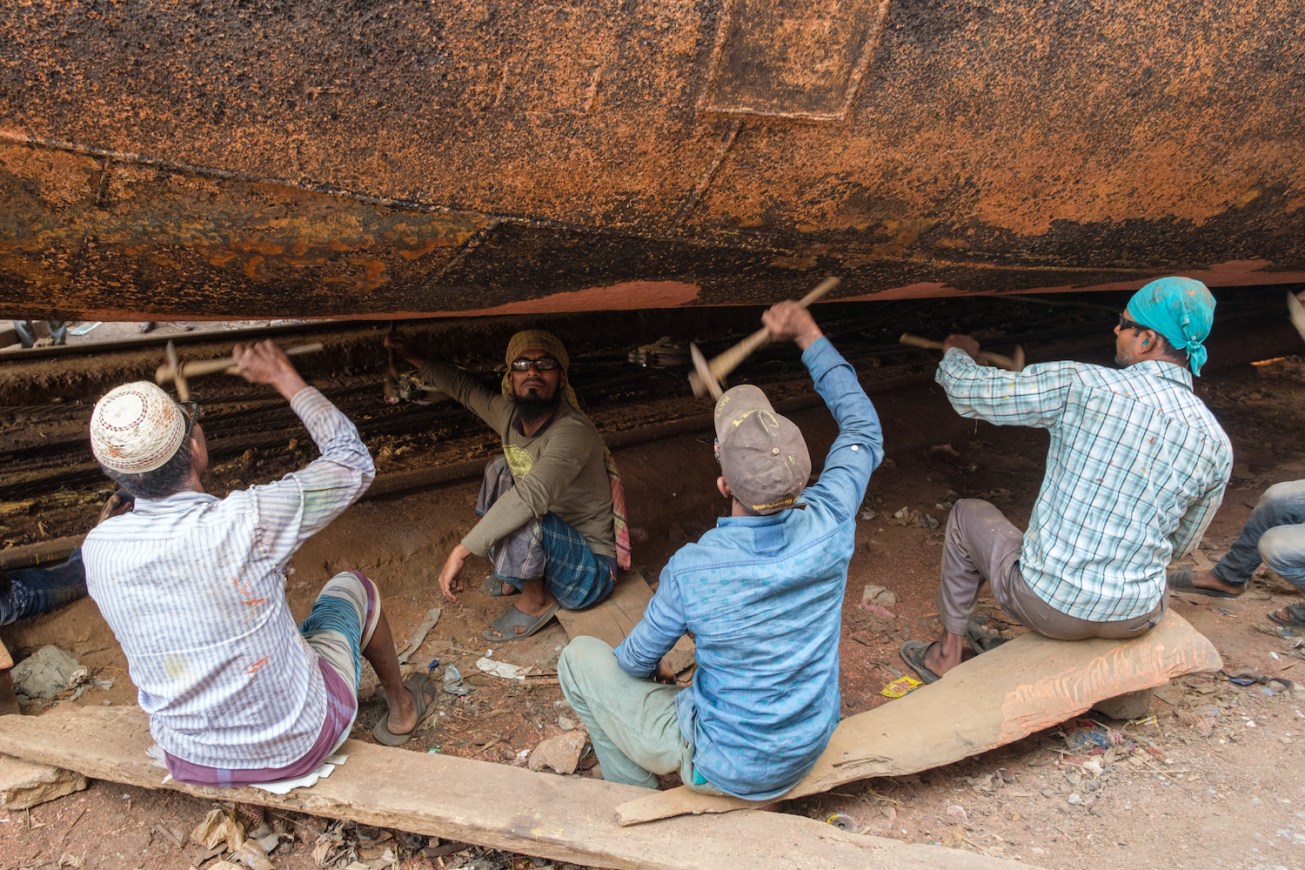
Workers remove the rust by hammering it off by hand. The sound is deafening.
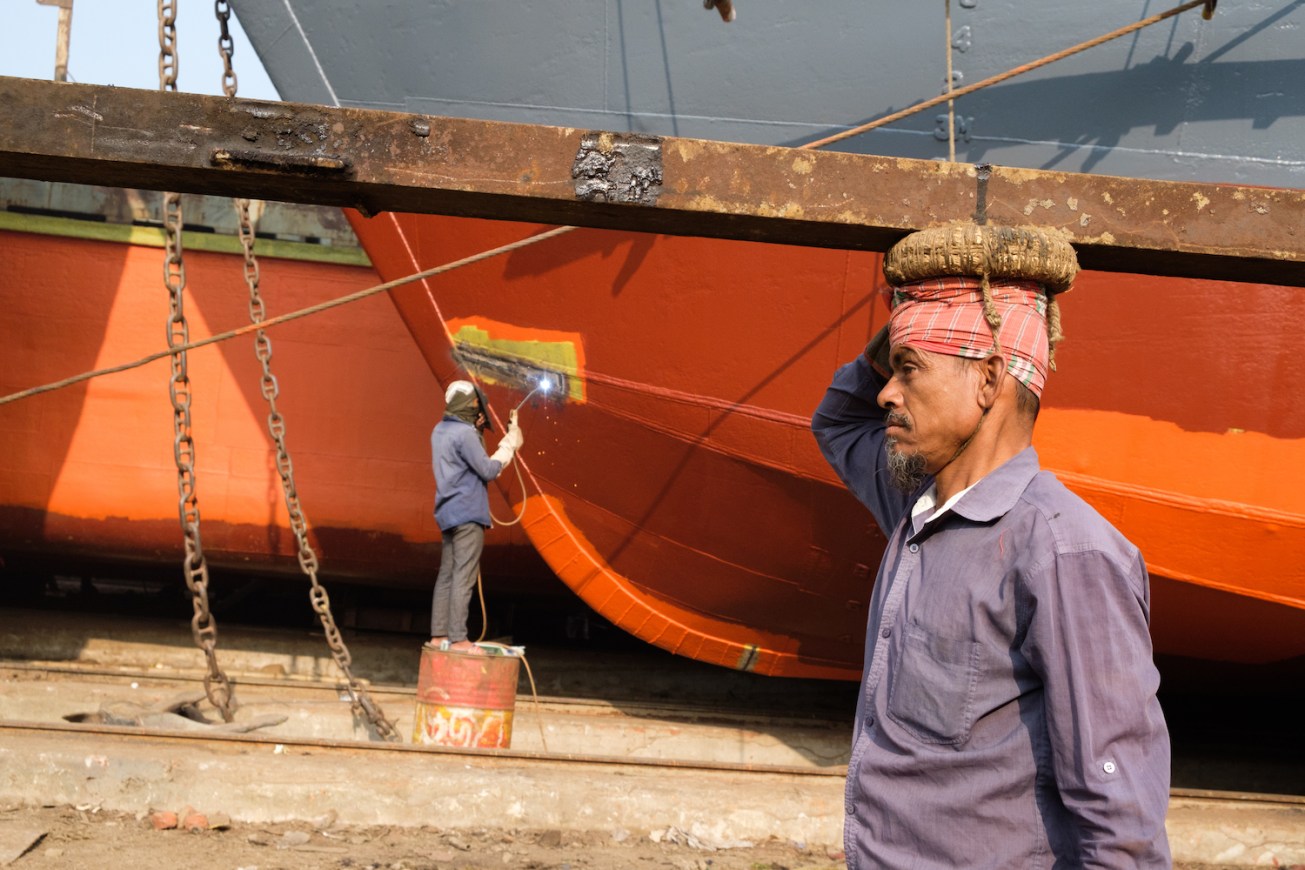
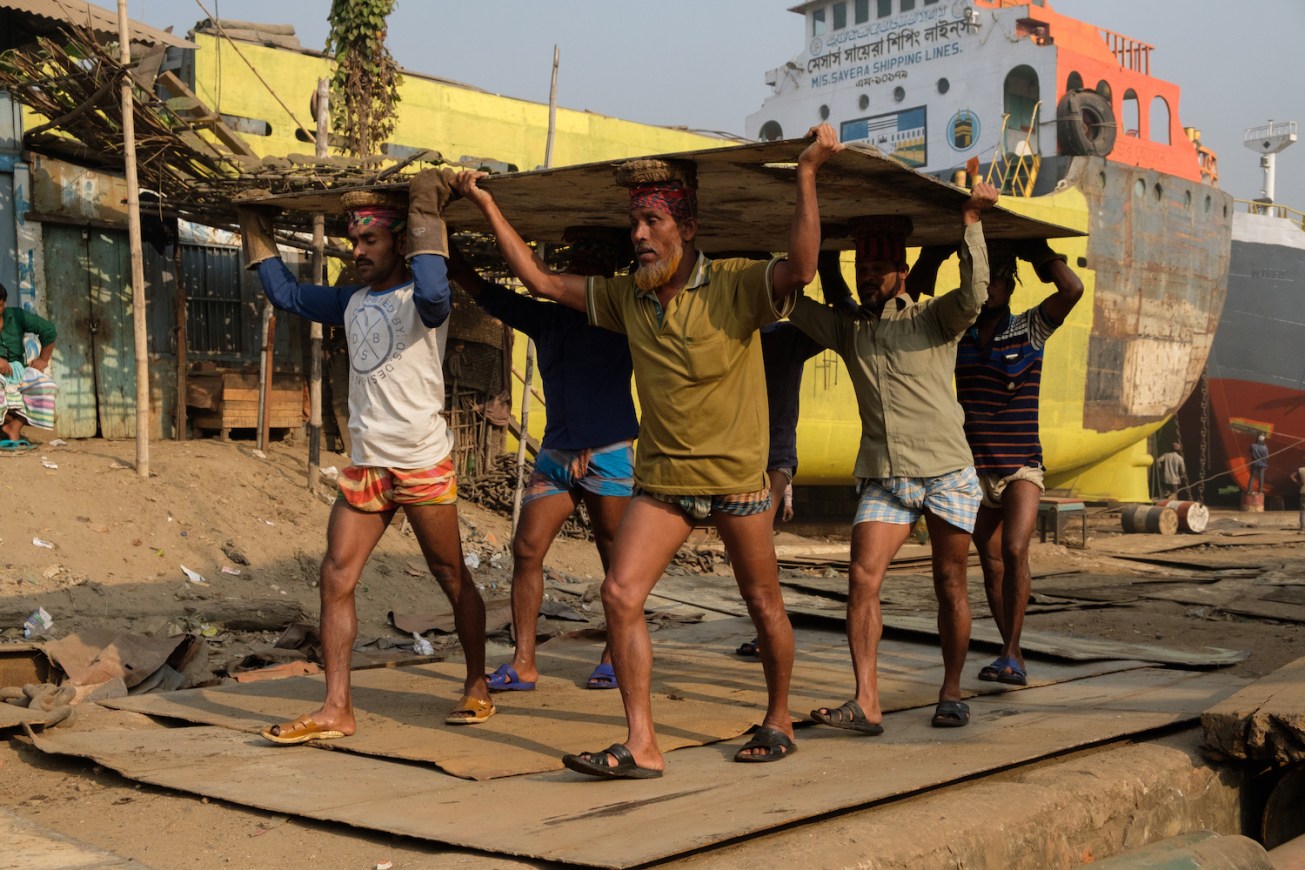
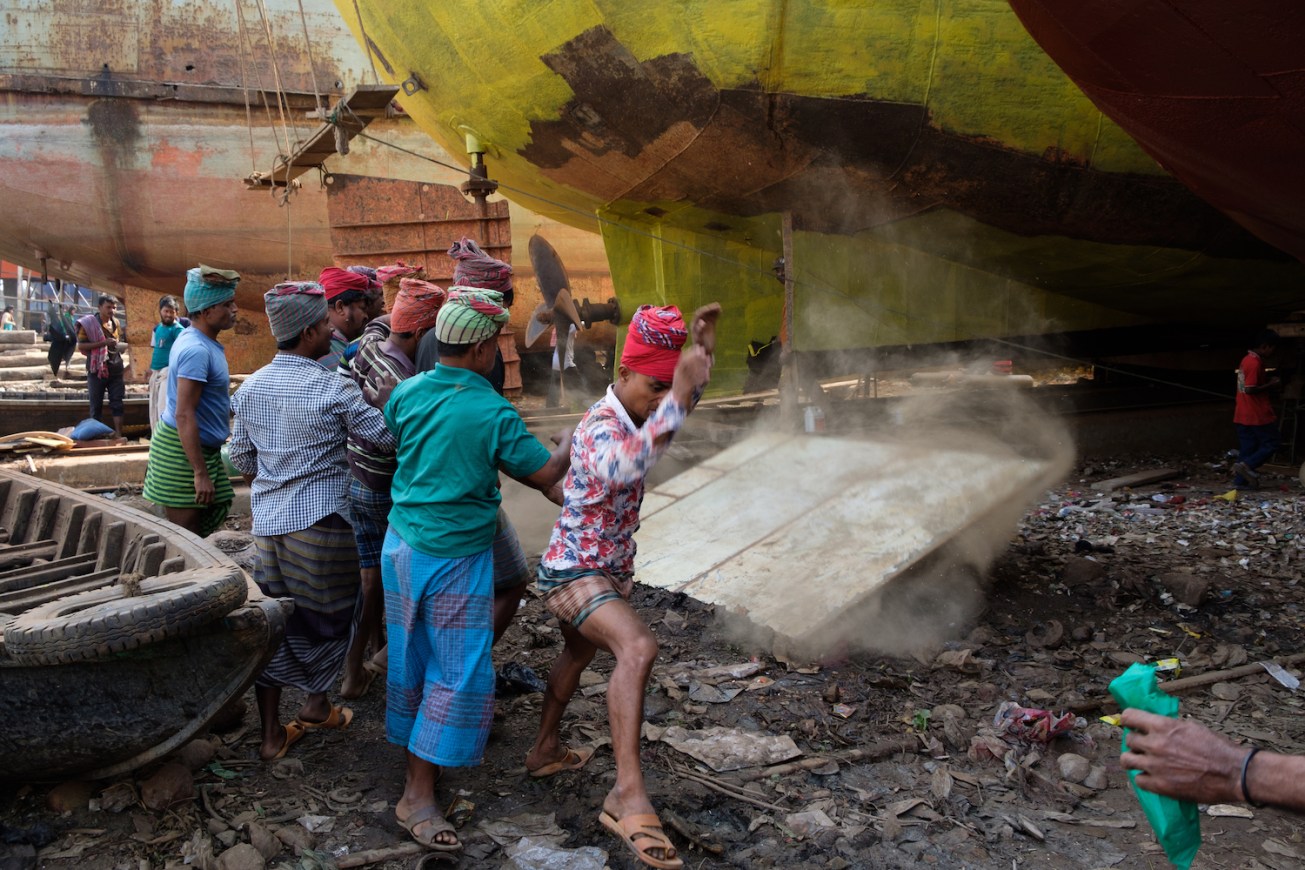

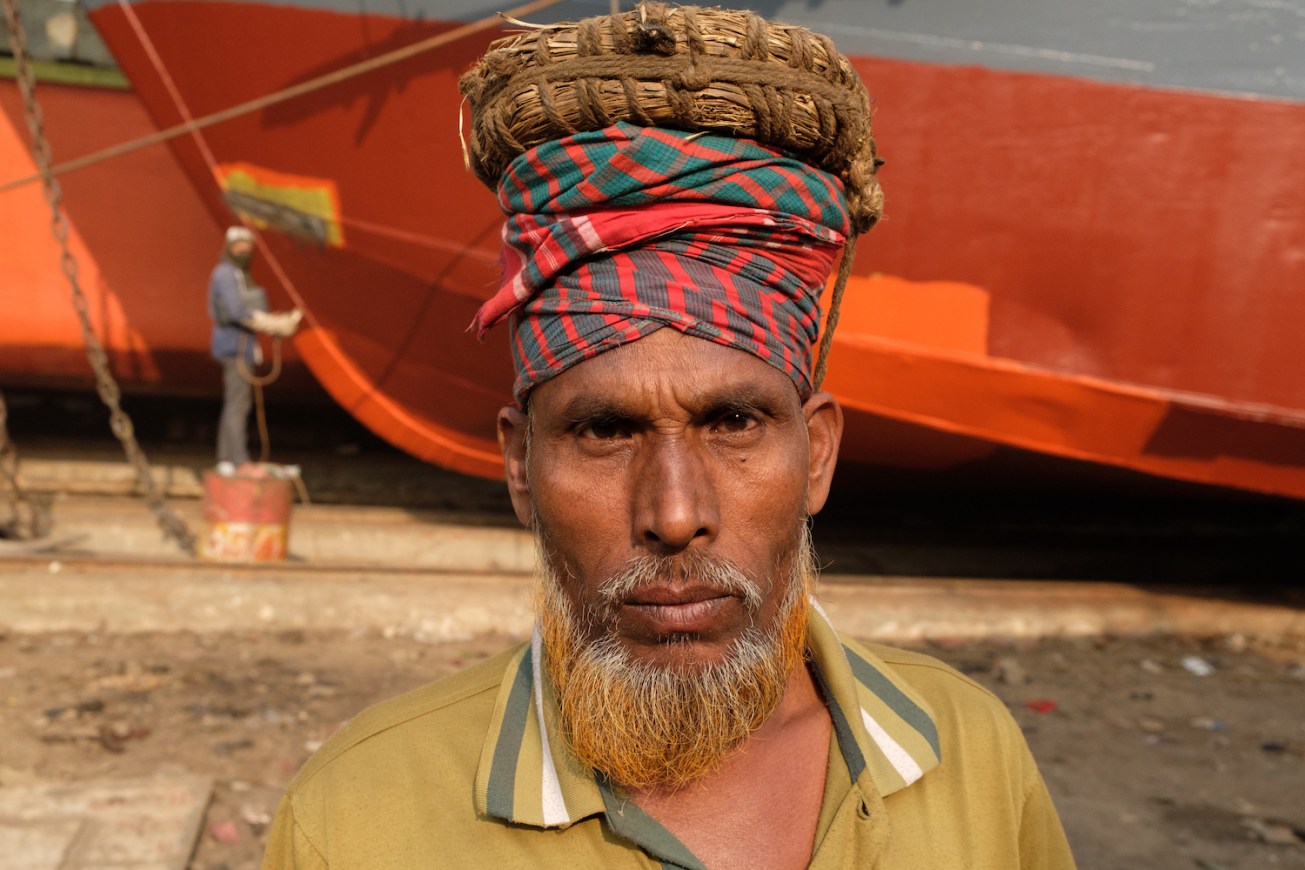
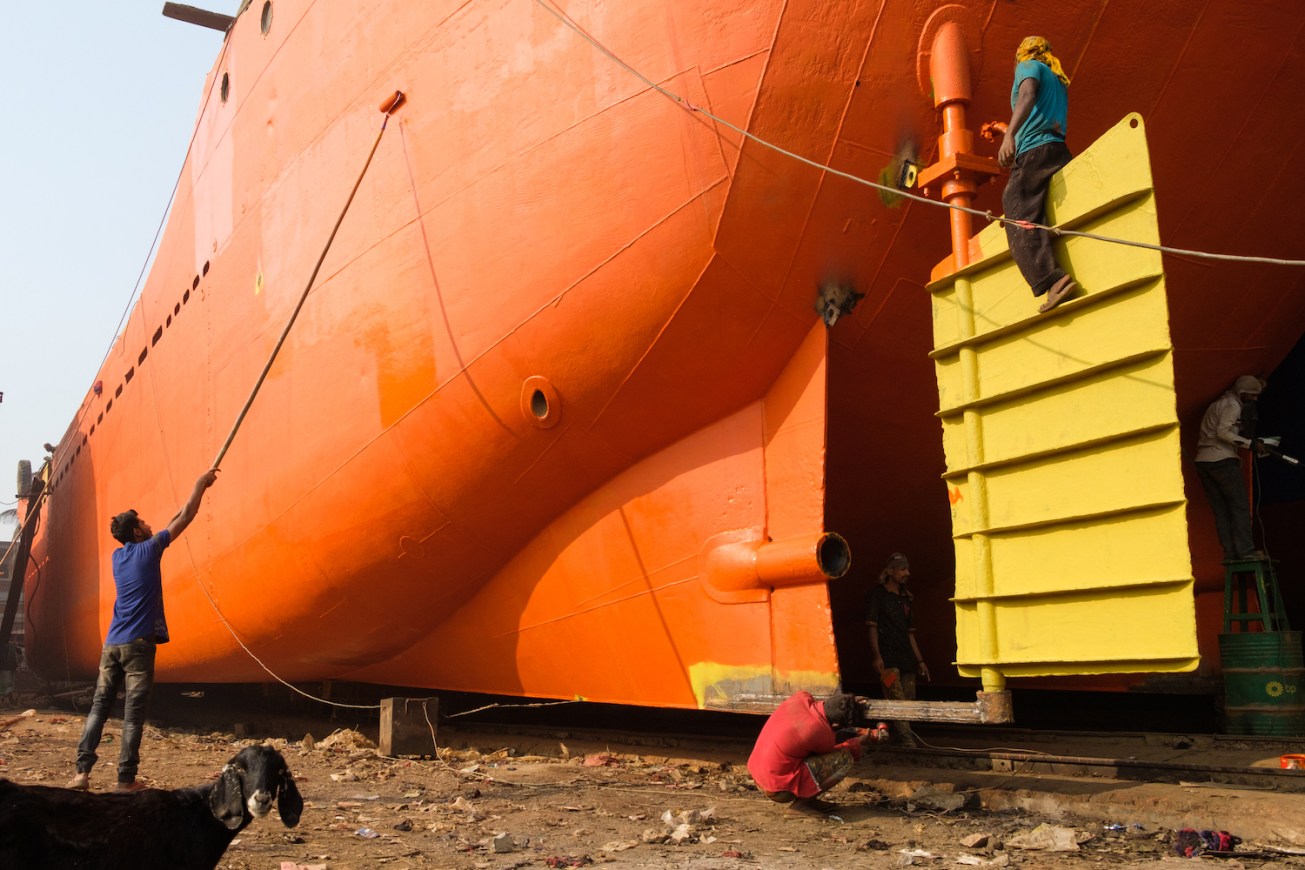
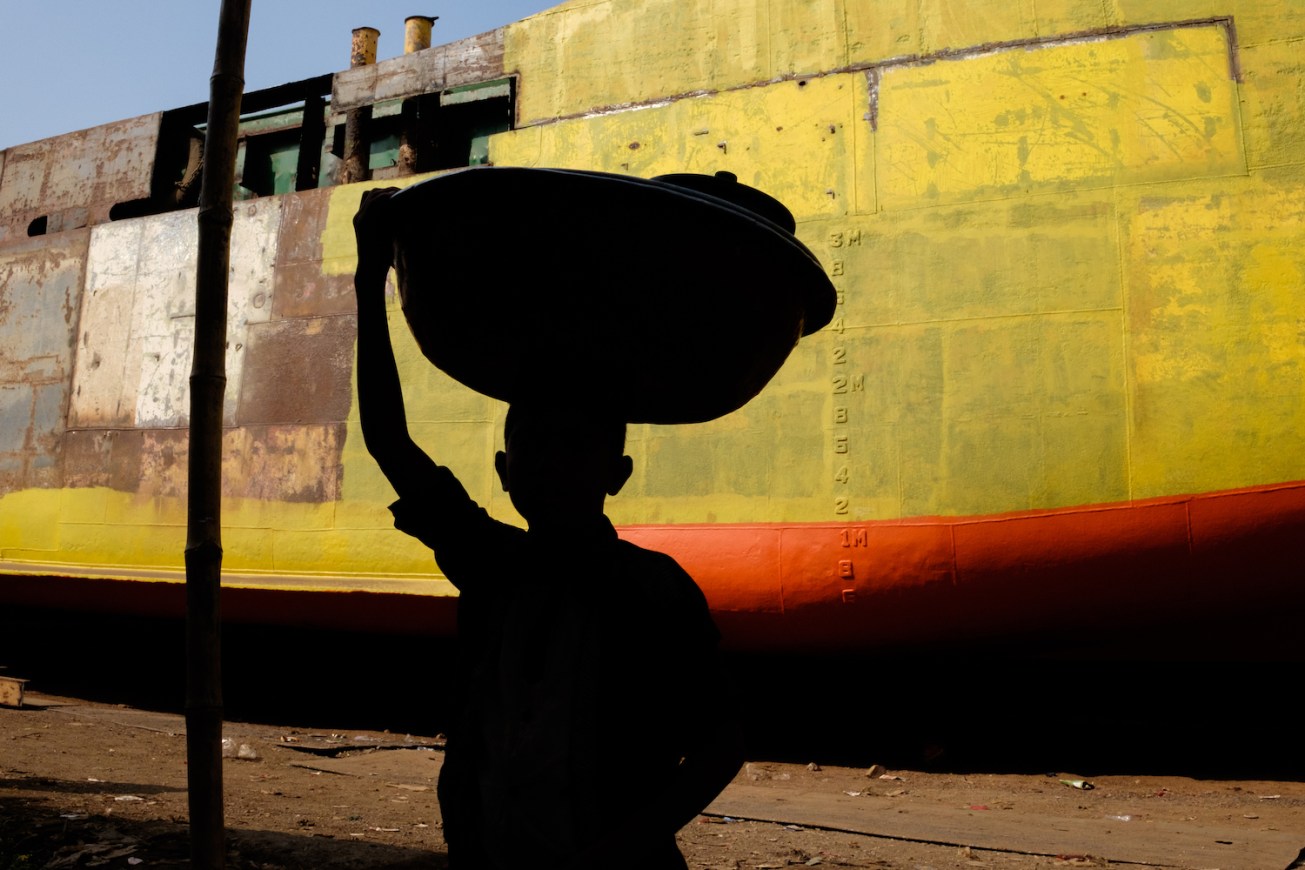

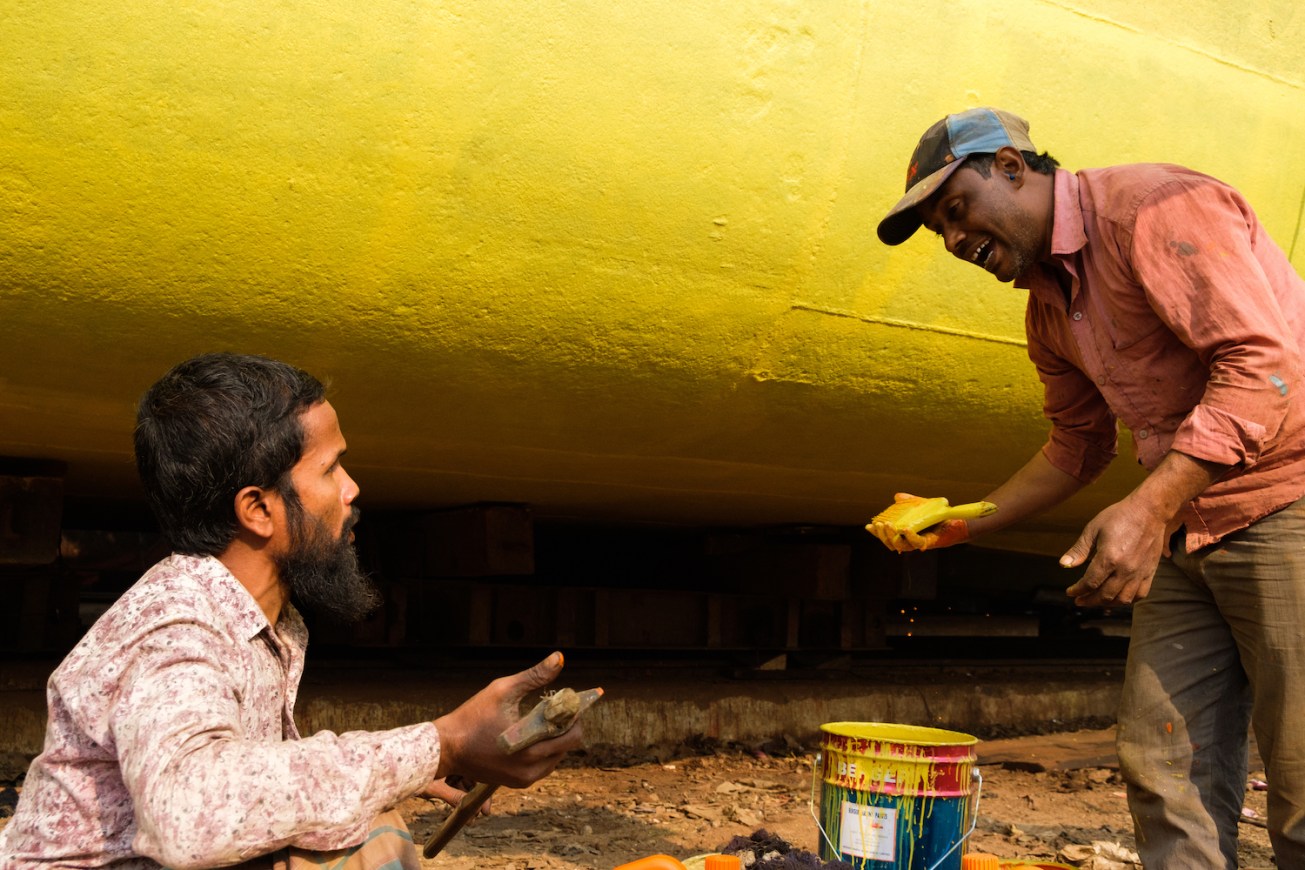

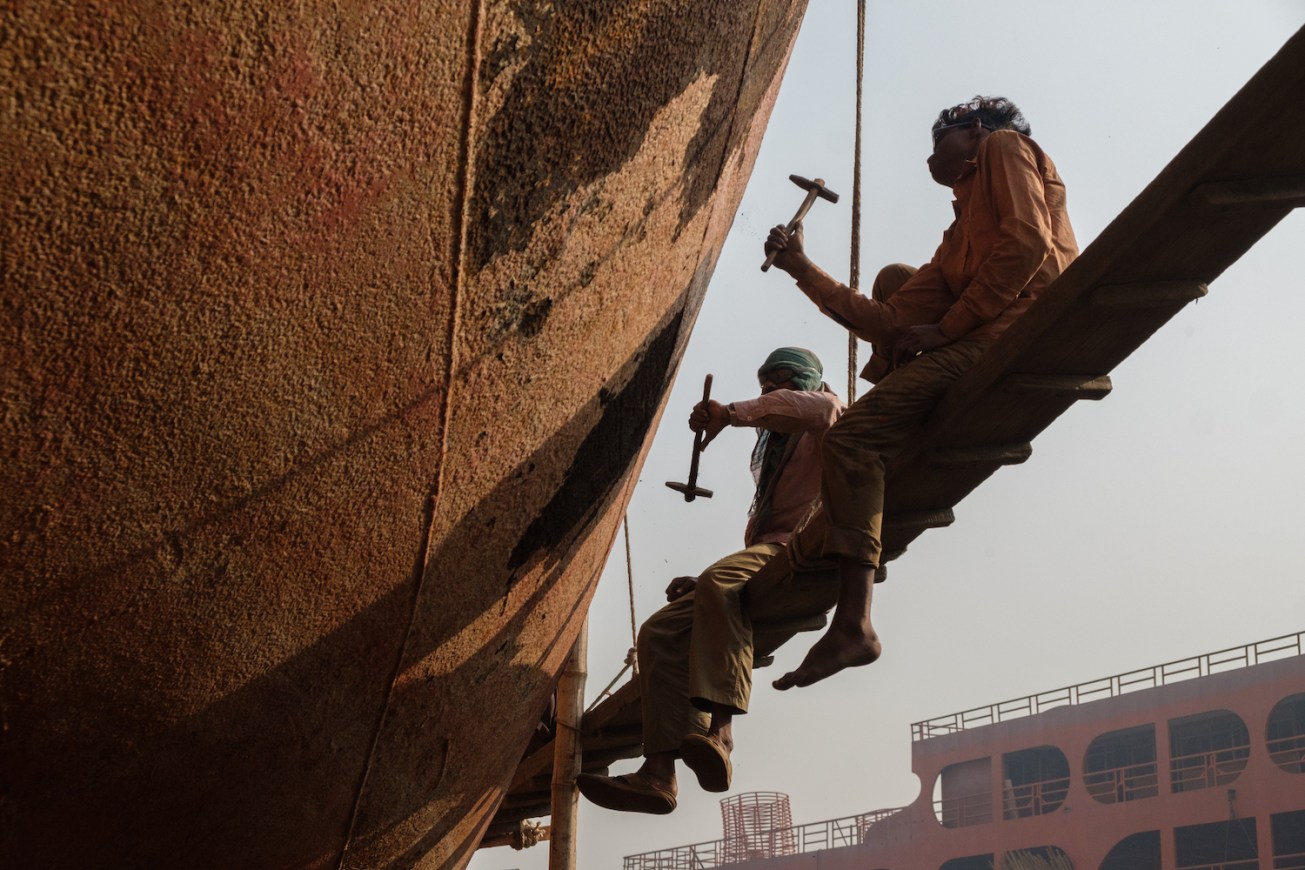
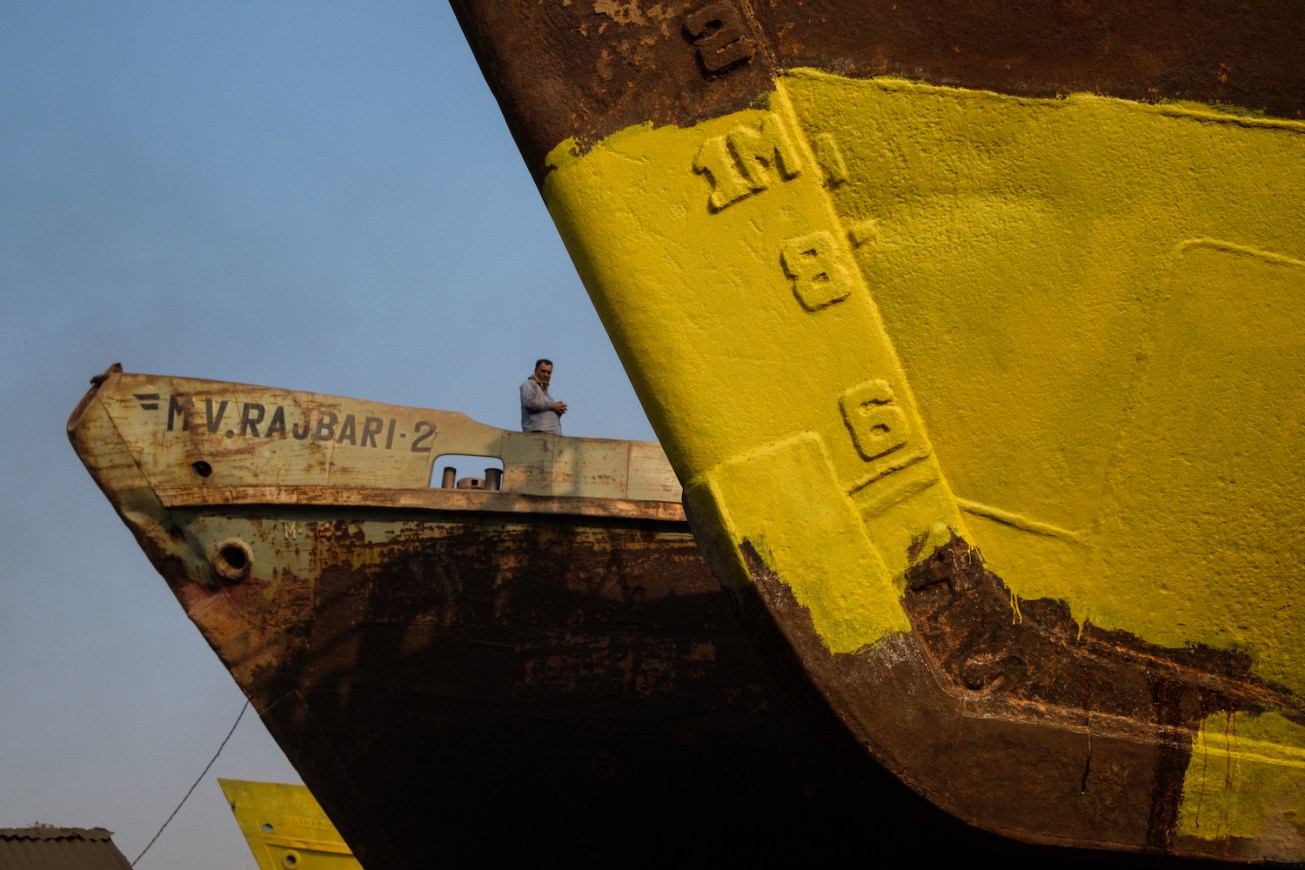


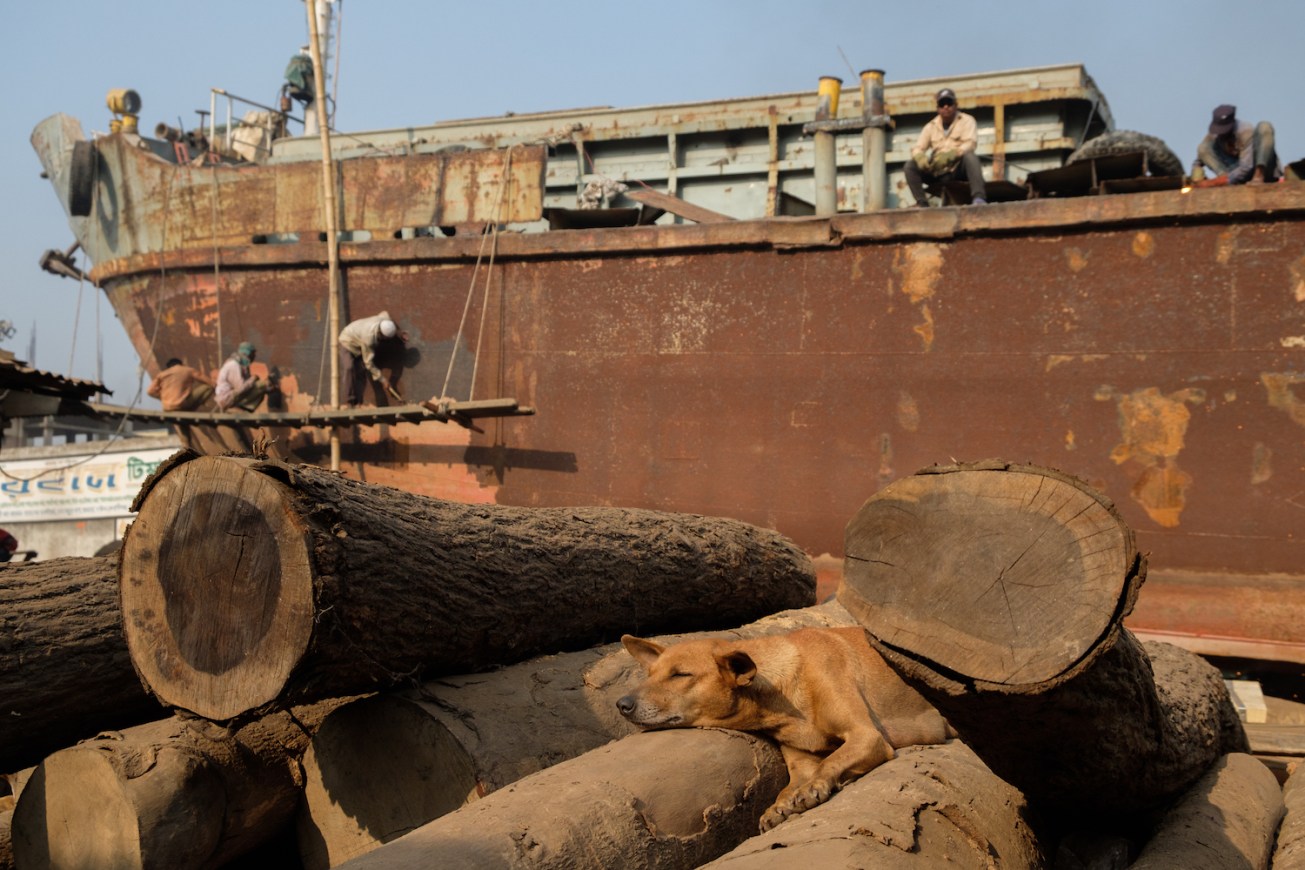
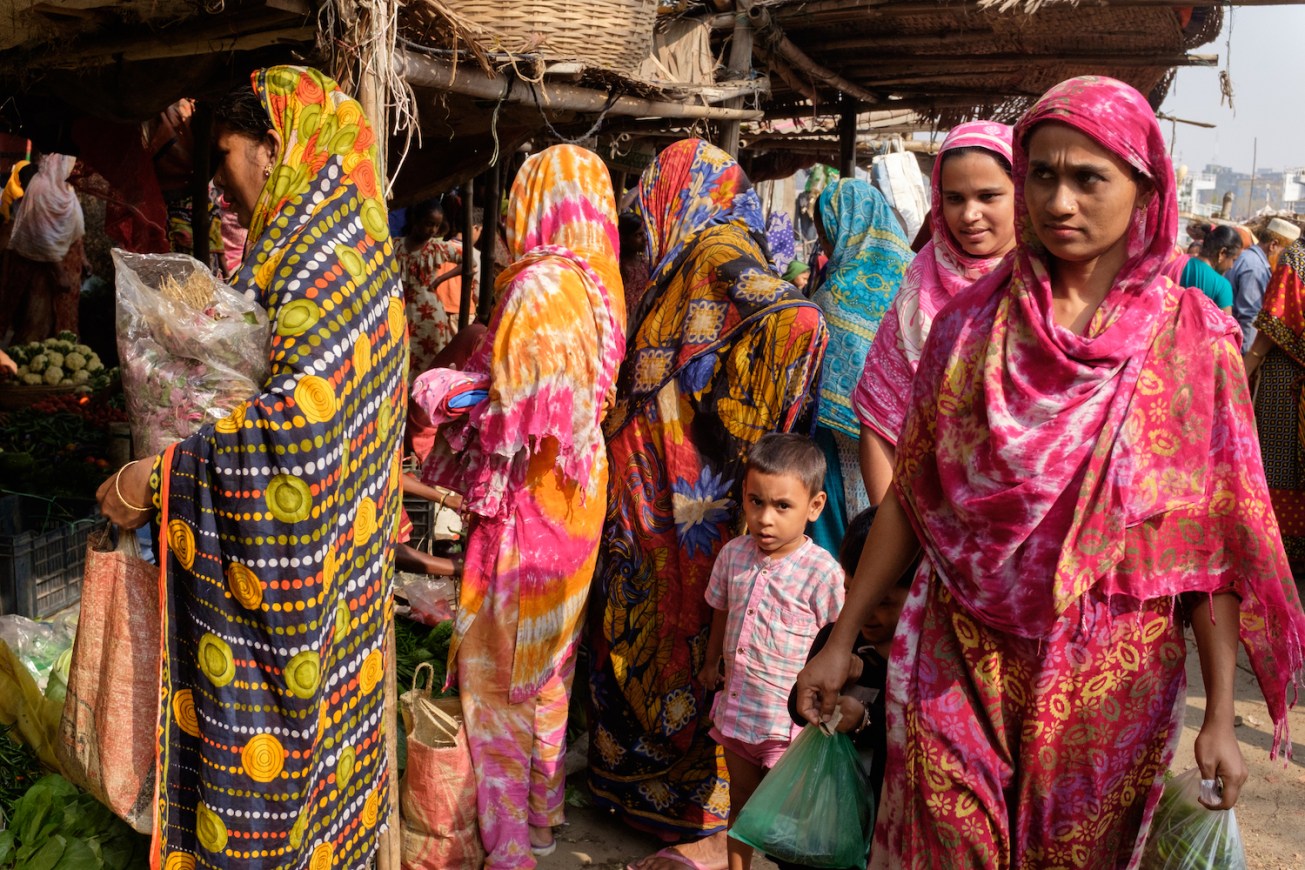
Next to the shipyards was a busy local market full of women in brightly colored clothes.
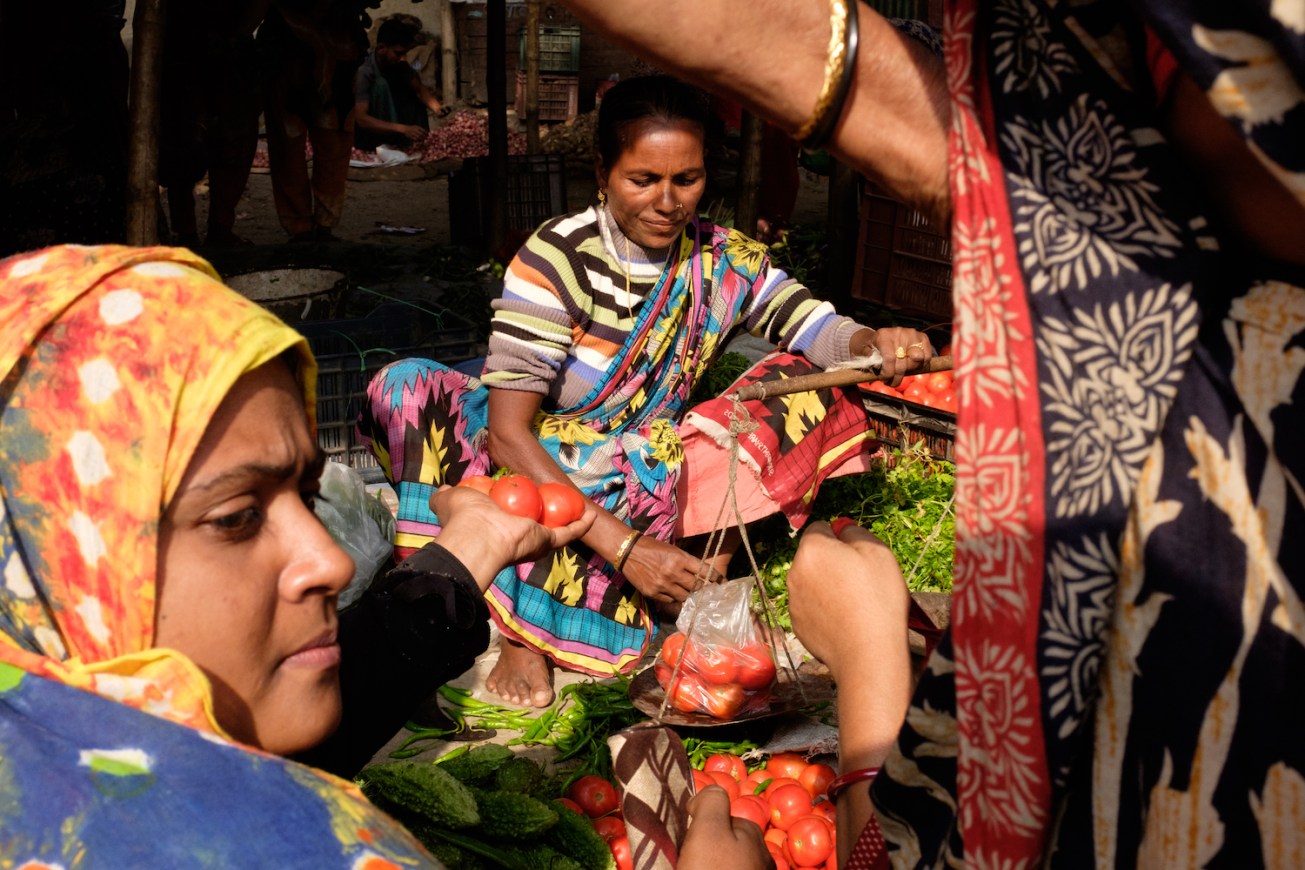
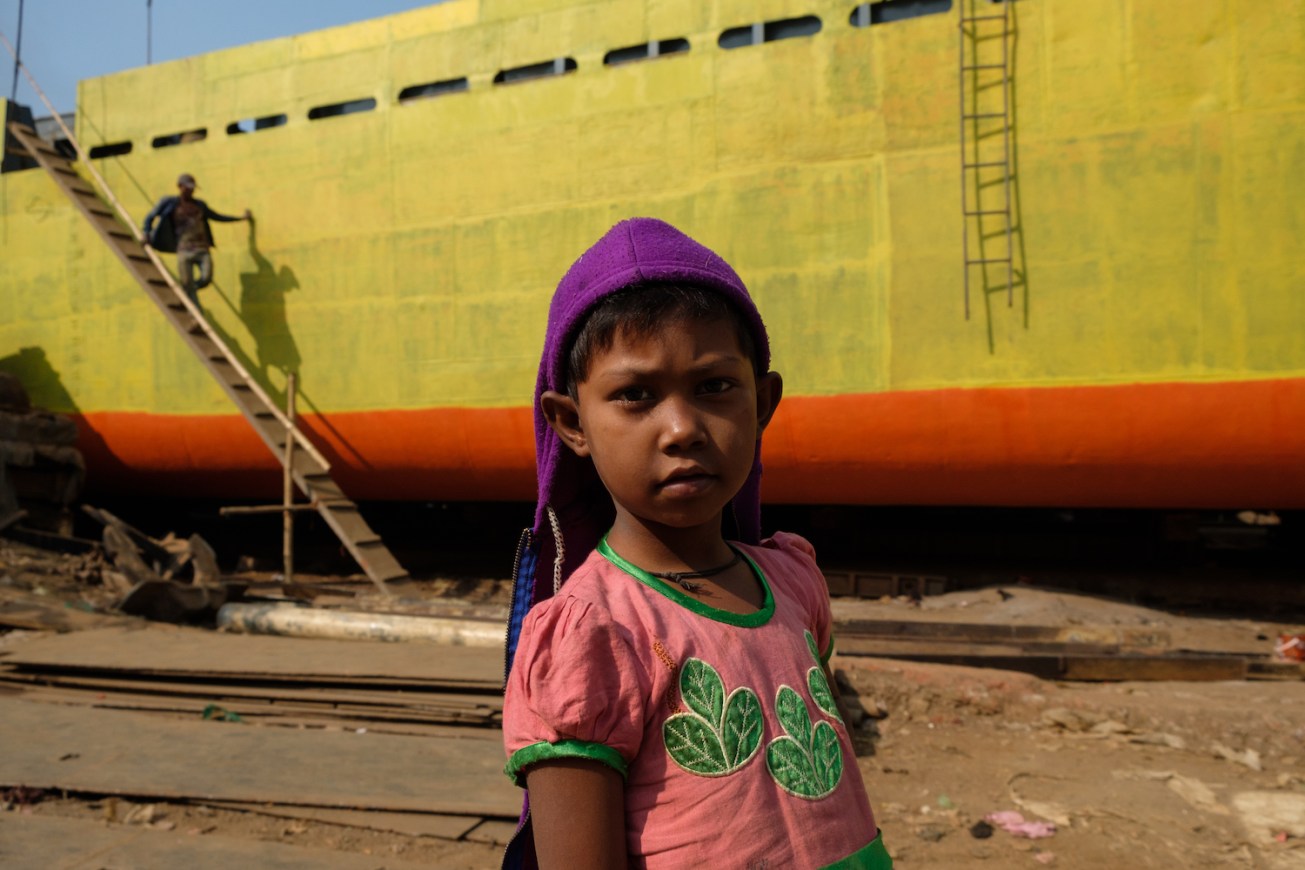
A future shipyards worker.
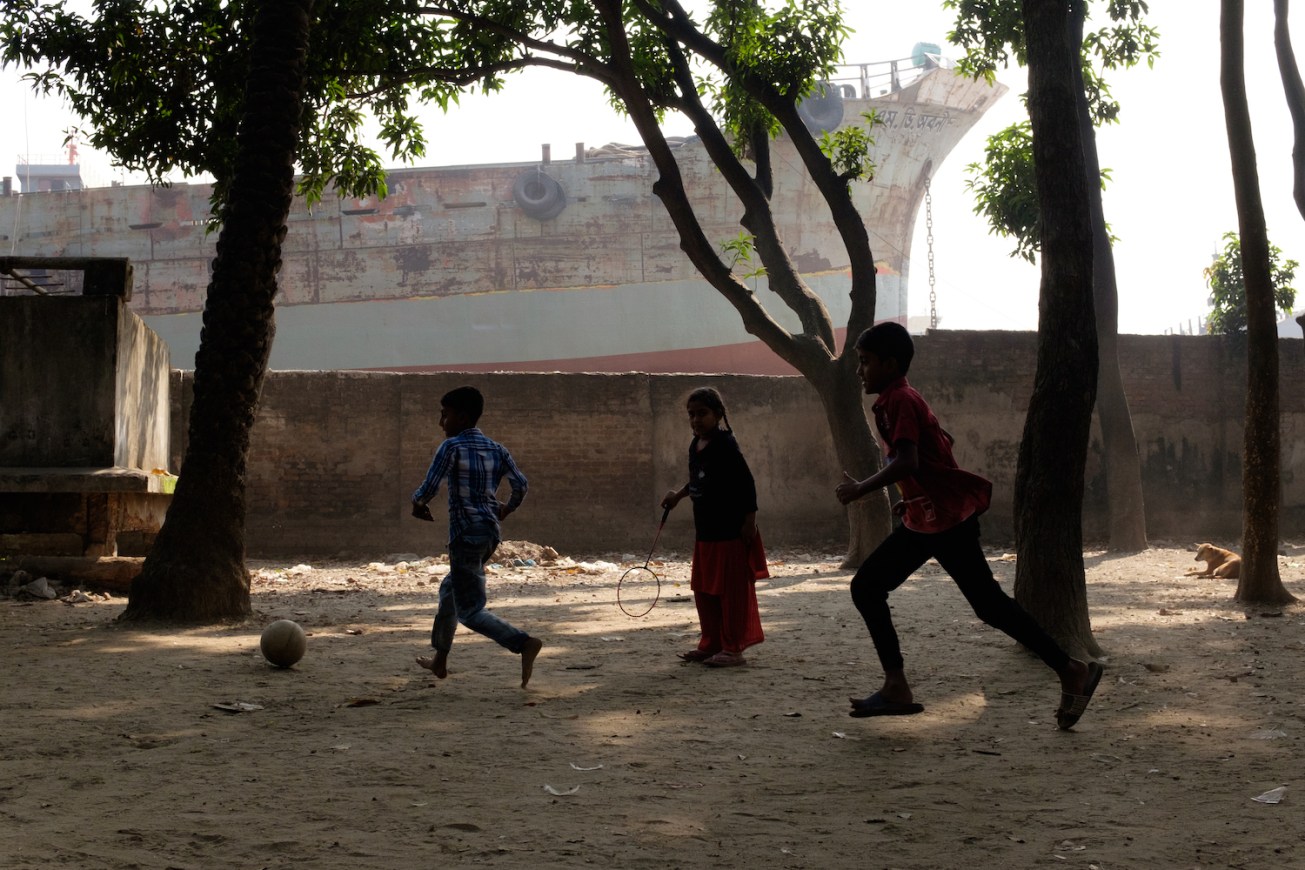

You can follow me on Facebook and Instagram to see more posts like this. I have photo prints available on my portfolio site.


wonderful photos and they told so much – along with your introduction
– that sleeping dog, the stretched out man, the very fit workers and the colors of the ladies clothes with the colors of the ship paint – so culture rich
Some of the guys I was with got some Nat Geo documentary quality photos of the fires and child workers but I was drawn to the color. As you say, a rich culture. It is fascinating, heartbreaking, uplighting and surreal all in one! Thanks for commenting and reading.
Yeah and as you noted – maybe it was meant to be you did not get pics of the children – hmmm
I once took all these photos on a trip to Virginia Beach – some artsy buildings – street shots – the event highlights – but there was a group of about 75 to 100 homeless people that I never grabbed a photo of. They were partying or socializing to the back and side of this building and I was in this overstimulated mode (last minute trip with son to see niece at this event and it was a jam packed 8 hours) and so when i saw them as we came and went a couple times – I was
Observing astutely and never thought of clicking photos –
This was years ago and I sometimes feel I missed some “humanity in action” photos – but like you said here – maybe it was meant to be and also – my inner person never felt led to click
–
And you never felt led to click and so we must trust that – maybe deep inside we had some type of respect or well
Who knows
But I did believe if we were meant to get some of the deep depravity shots we would have –
Either way
– I love what you gave us with the photo essays and the vibrant pictures (eyes and facial
Expressions) are still
With me
I didn’t get a good click of the behind the scenes action mainly due to timing. They pour used oil in these molds, bury them and light them of fire to forge the propellers. I saw them during the prep mode, but the other guys saw them after the fires were lit and captured dramatic flames and white smoke. I would have photographed it, but as a general rule there are certain things I won’t photograph like homeless people and people on cell phones. However, a group fo 75-100 homeless people at a party might be a different story. I can see why you didn’t take it, but that might have been a good documentary project. When photographing people we are often faced with these ethical questions.
thanks for the reply – and omg that fire and smoke must have been amazing to see.
and i wonder why you do not photo people on cell phones?
hm – I have a folder with people on cell phones – but I am starting to not like pictures I took of people candidly – feeling a little unethical.
–
and with that group in Virginia Beach – well it really would have added to the post and story – I guess they have a huge homeless crowd (which i saw a slice of) but again –
the times I saw them – camera was away – and I was focusing on the food we needed to get – or we were leaving –
also – it was such a huge crowd I did not even realize they were homeless until the end of the day – weird experience for sure.
I have been there many times and never saw their hang out –
__
People on cell phones are boring to me, no ethical reason 🙂 It is much more interesting to see a person reading a book or newspaper. However, sometimes I make exceptions https://www.instagram.com/p/Bqs-M8nAtgV/
oh that picture rocks – and the lesson is to look around for sure – hahahah what a nice find
So colorful. Great collection. Thank you for sharing 😊
Thank you Nasrul!
Your photos are so real. They have an originality and quality that is difficult to find in a “selfie ” obsessed world 🙂
Ha, thanks Gilda. I never take seflies, but so many locals in Bangladesh wanted selfies with me and that I started playing along and took dozens of selfies. I need longer arms because that is hard! Thanks again for commenting and your kind words.
These are amazing photos and I am happy to be seeing the colorful boats, clothing, and smiles. The few that hint at the real nature of the work are sobering even without the clouds of dust. Your angles and perspectives are fantastic. I did feel a tad worried about the sleeping dog as it appears his hindquarters are getting crushed! (I’m sure he is fine).
That sleeping dog has thrown off a few people. It is just the angle. I didn’t notice it at the time – I was moving to get the background. I’d really need a video to capture the sights and sounds to illustrate the true danger of the work.
It’s hard to imagine the working conditions. Would working there be considered a “good” job? Any idea if the pay is above average? The workers’ smiles and the bright colors paint a happier picture. Great essay.
I can’t imagine that it is a good job, but it is a job nonetheless. I’m sure there are frequent accidents and people no doubt suffer from respiratory ailments. I think Bangladeshi people make the most of their situation and despite the conditions they smile, work hard and try to be happy.
What I meant by “good” is, is it better than other jobs available. Would someone want to work there because of better pay even with worse conditions or is it the only game in town?
I don’t know for sure but I’ll see what I can find out. I can’t imagine that the work pays well but if you live in that neighborhood like you say maybe it is all you have.
Wonderful shots.
Thanks Kyle.
Fabulous photos Jeff. So many of the worlds people work in similarly hard conditions. Every time I see it (like recently in India) I’m so conflicted – fascinated, appalled, thankful, heartbroken. This place sounds so harsh, but their resilience and smiles tell a story of human strength.
Alison
The one word we kept coming back to was “unfair.” It isn’t fair that these people have to work in these dangerous conditions with a lack of safety equipment for such low pay. Bangladesh is one of the toughest places on Earth to live and we went to some extreme places within Bangladesh. But as you say, they are resilient and making the best of it.
Really beautiful pictures. Isn’t it amazing how beauty Can be a part of a harsh world? Life’s truth. Thanks again for another glimpse into a forgotten slice of our world.
It certainly is a forgotten place even though we all probably have clothes from there. Harsh place, beautiful people. Thanks for commenting and reading!
Good stuff!!!
Thanks Kevin.
This is a great story 🙂
Thank you Joshi.
Jeff, these are an amazing set of images and better yet is the story your words do when matched with these photos. Fantastic ~ and a surreal experience for you I imagine, as it was for us the reader.
It is certainly bizarre especially because as an outsider you are free to come and go. In almost anywhere else on Earth it would be fenced off. I’m glad I got to visit but still shocked at what I saw.
Pingback: ROY G BIV Asia | Planet Bell
Dear Jeff,
Did you go to the shipyard with a guide or just Googled your way there? If you went there with a guide, appreciate his contact info, thanks.
I went with a small group of friends. You can easily go on your own, but it may be better to go with a friend or a local. The workers are extremely friendly, but it is also a toxic, polluted environment which can be intimidating. I’ll try and get you some guide info.
That would be great Jeff. I am leaving in about a week’s time.
I sent you an email with some contact info.
Thank you so much!
Fantastic photos… they do add an uplifting tone to these guys’ job. A guy called Scott Vincent also did a great video report which somebody, in a stroke of genius, paired with Kyuss’ ‘El Rodeo’ in a video on Youtube: https://www.youtube.com/watch?v=KVm8G0ipETc
That video is so cool – thanks for sharing. My photos may be colorful, but man, what a horrible place to work. The conditions are brutal, but the people make the of it.